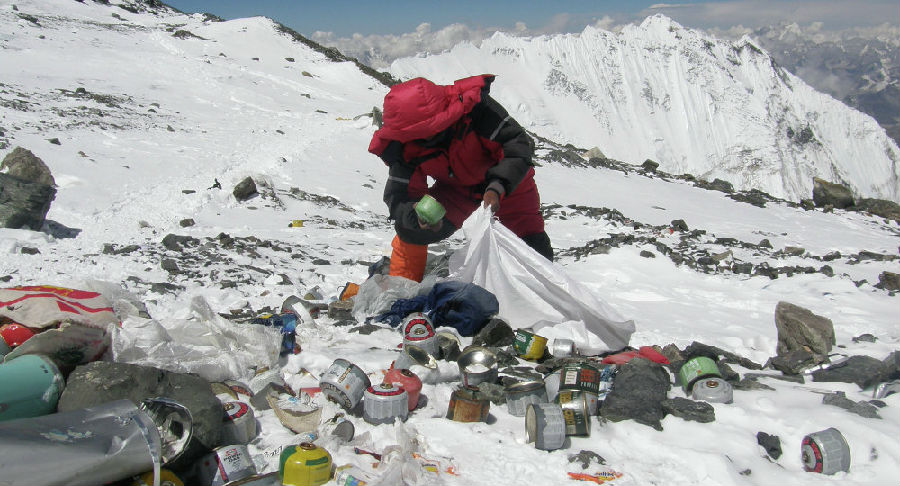A clean-up campaign has begun at Mount Everest, aiming to airlift 100 tonnes of rubbish left behind by tourists and climbers of the world's highest mountain.
近日,珠穆朗玛峰开展了一项清理行动,目的是将游客和登山者在这一世界最高峰遗留下的100吨垃圾空运走。
On its first day, 1,200kg (2,645 lbs) of waste was flown from Lukla airport to Kathmandu for recycling.
在行动的第一天,共有1200公斤(折合2645磅)的废物从卢卡拉机场被运向加德满都进行回收利用。
Mountaineers are required to bring back whatever waste they generate on their climb. But every year, local guides gather hundreds of kilograms of rubbish.
登山者一直被要求带回攀登时所产生的任何废物。但当地导游每年都会收集数百公斤的垃圾。
Most of the waste left on the mountain is empty beer bottles and cans, empty food tins, and discarded mountaineering and trekking equipment.
留在山上的大部分废物都是空的啤酒瓶、啤酒罐、食物罐头以及丢弃的登山和徒步旅行设备。

That can include oxygen bottles, which are essential for climbing at the highest altitudes.
这其中可能包括对于在最高海拔处攀登必不可少的氧气瓶。
Clean-up programmes have been run by local guides, known as Sherpas, for decades, but are now coordinated by the Sagarmatha Pollution Control Committee (SPCC).
几十年来一直是当地导游,也就是夏尔巴人负责开展该清理行动,但现在则由萨加玛塔污染控制委员会协调。
According to SPCC, over 100,000 people visited the region last year. About 40,000 were mountaineers or trekkers.
据萨加玛塔污染控制委员会透露,去年共有超过10万人访问了该地区。其中大约4万人是登山者或徒步旅行者。
As well as managing the industrial waste left behind by visitors, the SPCC and local guides have to deal with the biological waste left by so many people. In 2015, the mountaineering association warned that human faeces were becoming a health hazard.
除了管理游客留下的工业废物外,据萨加玛塔污染控制委员会和当地导游还必须处理许多人留下的生物废物。2015年,一登山协会警告称,人类粪便正在成为一种健康危害因子。


